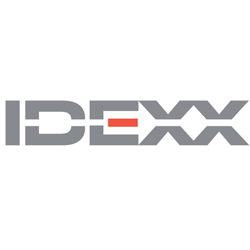Managing Cognitive Dysfunction and Behavioral Anxiety
Canine and feline cognitive dysfunction (CCD/FCD) is an age-related neurodegenerative condition well described in dogs but less so in cats. Approximately 14–22.5% of dogs older than 8 yr suffer from age-related cognitive impairment.39 Clinical signs of cognitive dysfunction vary between dogs and cats and may not be recognized by clients in the earlier stages. Early recognition of this condition is crucial as treatment is more effective in the earlier stages of CCD, and this condition may significantly affect the quality of the human-animal bond.40
The pathophysiology of CCD is similar to Alzheimer disease in people. Beta amyloid plaques are seen in both, most commonly as insoluble beta amyloid, but there are also soluble forms. In addition, Tau neurofibrillary tangles may play a role in FCD but do not appear to play a role in CCD. There are other structural abnormalities, such as blood vessel fibrosis, ventricular enlargement, cerebral atrophy, astroglia hypertrophy and hyperplasia, microhemorrhages, and intraneuronal accumulation of several substances, including lipofuscin and ubiquitin. Mitochondrial dysfunction also plays a role.39
The clinical signs for CCD may resemble other intracranial diseases. The acronym DISHAA has been historically used for the categories of clinical signs seen with cognitive dysfunction: Disorientation, alterations in social Interactions, changes in Sleep-wake cycles, loss of House training and other learned behaviors, altered Activity levels, and increased Anxiety. In dogs, the most common clinical signs include daytime sleeping and nighttime restlessness, decreased interaction, disorientation at home, and anxiety. In a more recent study, it was found that visual impairment, smell disturbance, tremors, and falling down are associated with the diagnosis of CCD and may help clients and veterinarians recognize early CCD.41 Other clinical signs of note include lack of recognition of and interaction with familiar people and objects, loss of house training, losses in behavioral training, appetite changes, and compulsion or pacing.41 Clinical signs in cats are similar, although cats tend to have an increase in interaction and vocalization compared with dogs.42 Anxiety has been recognized as a significant component of this disorder that should not be overlooked.43
Cognitive dysfunction may be a diagnosis of exclusion. A thorough history, physical examination, neurological examination, biochemical evaluation, and urinalysis are integral to ensure these animals do not have other underlying disease causing similar clinical signs. Neurological examination may be consistent with forebrain dysfunction, with evidence of dementia and compulsion. An MRI of the brain is recommended to rule out structural disease. Other differentials for similar behavior changes may include intracranial neoplasia, pain, and organ dysfunction.39 Certain MRI changes are suggestive of cognitive dysfunction, such as reduction in mass of the interthalamic adhesion and cerebrocortical atrophy, although findings should be correlated with clinical signs.44
To mitigate the underdiagnosis of cognitive dysfunction, specific and directed questions can be used as markers.40,42 Multiple questionnaires exist that can be used as both diagnostic and monitoring tools.45,46 These canine cognitive dysfunction/QOL questionnaires are to be completed by clients at set intervals. One scale, CADES (CAnine DEmentia Scale), is predictive of the progression of cognitive impairment.47 Serial scores provided by clients and documented in the medical record can also be used as a tool for client education and to guide treatment.
Evidence suggests that management and treatment of cognitive dysfunction are most effective when started early, highlighting the importance of early recognition of cognitive impairment by the veterinary team. Although many therapies have been studied for the treatment of cognitive dysfunction, selegiline, a selective irreversible monoamine oxidase B inhibitor, is the only drug labeled for use for canine cognitive dysfunction. Selegiline is dosed at 0.5–1 mg/kg once a day OR every 24 hr. in the morning for 30 days, at which point the dose can be adjusted up to the next tablet size if there is no improvement at the lower dose. Selegiline is effective in up to 70% of dogs with cognitive dysfunction.48 Toxicity can occur if selegiline is used in conjunction with other antidepressants, narcotics, phenylpropanolamine, or monoamine oxidase inhibitors. Newer treatments are being investigated and may be available in the future, such as a butyrylcholinesterase inhibitor.49
Certain diets, especially those high in antioxidants and medium chain triglycerides, have also been posited for the treatment of this condition. These diets showed the most positive effect when combined with environmental enrichment (exercise, new toys, cognitive games, tasks, agility). The quality and rigor of the research associated with other various supplements, nutraceuticals, acupuncture, and diets is limited.39,50,51
Anxiety is a clinical sign associated with CCD that may be directly treated. Anxiety has been recognized to significantly compromise the QOL of both the pet and family.43 It is a complex syndrome and can also be related to chronic pain. Chronic pain–related anxiety is recognized in human cognitive dysfunction.52 The treatment of pain, along with anxiolytics and antidepressants for anxiety, should be considered in the cognitively impaired patient. Various anxiolytics and antidepressants can be considered.53 Diazepam has been reported to exacerbate dementia signs in humans.54 There are FDA-approved drugs licensed for dogs for noise phobia and separation anxiety (e.g., clomipramine) but not specifically for anxiety associated with CCD. Shorter-acting drugs such as trazodone and alprazolam are preferred by the task force because of their rapid onset and clearance from the body, as well as their very limited side-effect profile.







